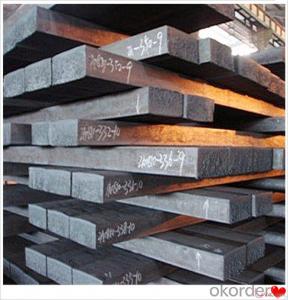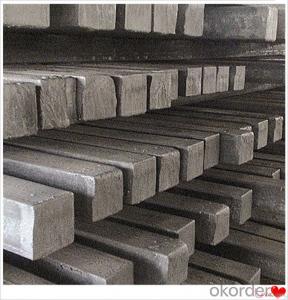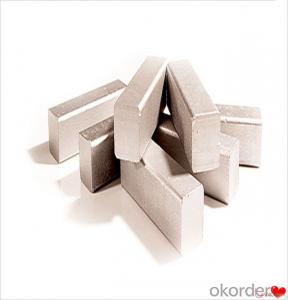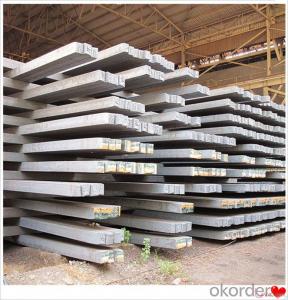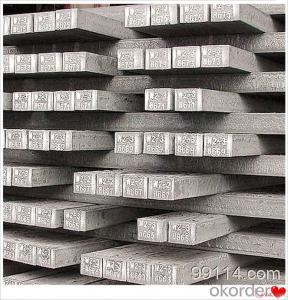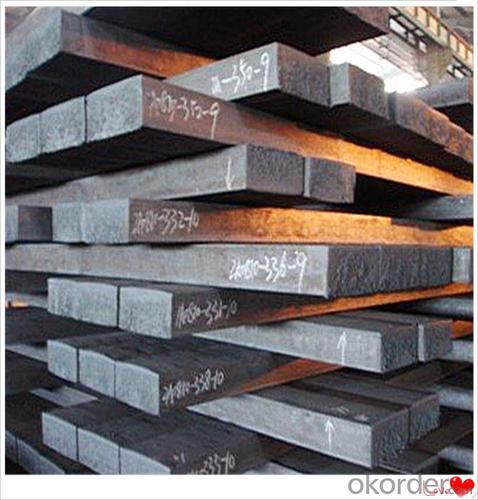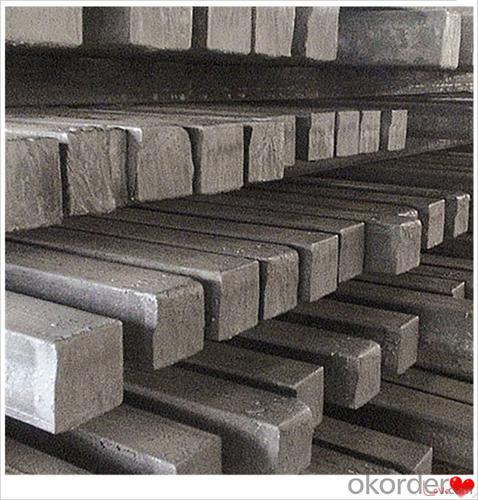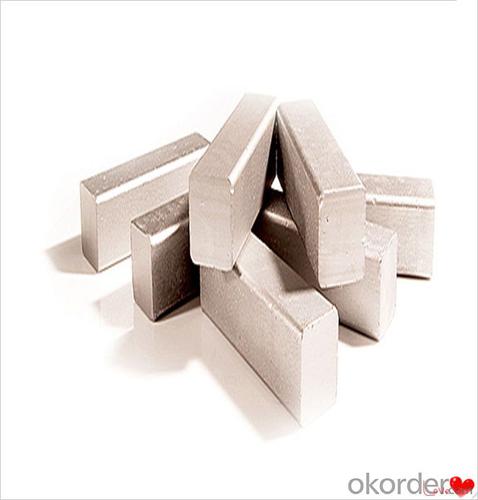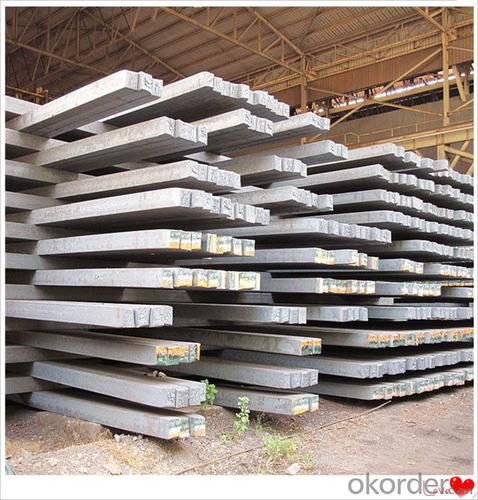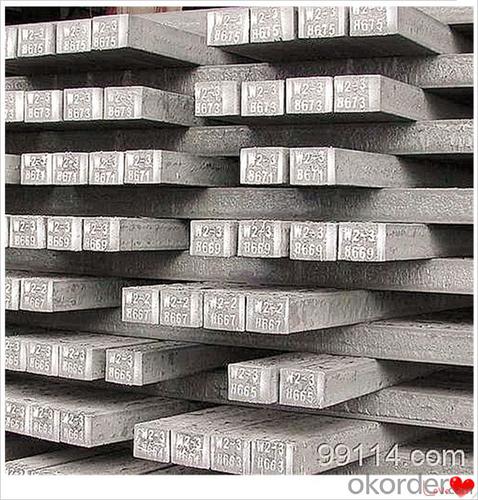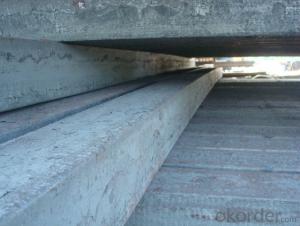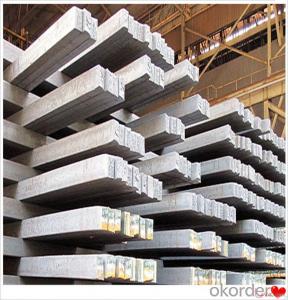Damascus Steel Billet Q235,Q255,Q275,Q345,3SP,5SP,20MnSi Made in China
- Loading Port:
- China main port
- Payment Terms:
- TT OR LC
- Min Order Qty:
- 20 m.t.
- Supply Capability:
- 200000 m.t./month
OKorder Service Pledge
OKorder Financial Service
You Might Also Like
Damascus Steel Billet Q235,Q255,Q275,Q345,3SP,5SP,20MnSi Made in China
Specification
Steel billet(ingot) by cogging or breakdown of semi-finished products, is the raw material of all kinds of steel mill. Billet section of square, round, flat, rectangular and abnormity of several kinds of, mainly related to the shape of rolled products.
CNBM Q235,Q275,Q345,3SP,5SP,20MnSi Billets Steel in Hot Sale
Hot Rolled Steel Billets/ Mild Steel Bar/ Billet Steel Damascus Steel Billet
Specification (see below)
Standard: GB/JIS/ASTM
Size: 50*50mm-180*180mm
Length: 3-12mtrs or Customised
Steel material: Q235,Q255,Q275,Q345,3SP,5SP,20MnSi
Technique: Hot rolled
FOB Unit Ton Price $250-350 and Usually I will quote you CFR price.
MOQ: Usually 1000-10000MT/size
Shipment:By Container,Bulk Vessel
Packaging Details: bundles with steel strips or as customers's requirements
Delivery time: Usually within 30 days after the deposit/LC
Inspection:Third party inspection before loading.
Technical data
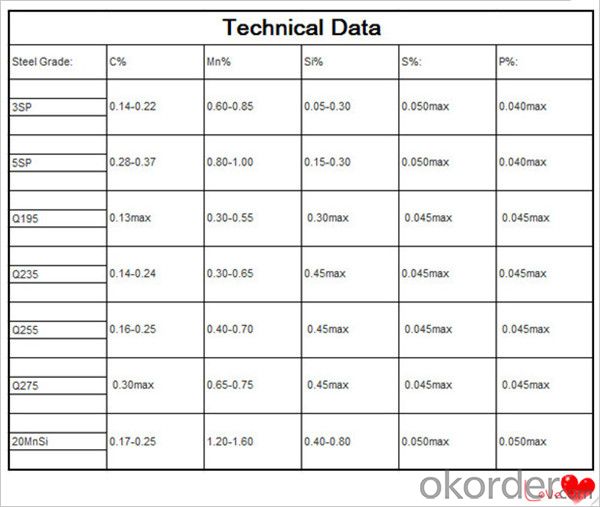
Feature Steel Billet
Rectangular billet continuous casting billet and mainly general carbon steel, low carbon low silicon cold-rolled material, high quality carbon structural steel, high strength low alloy steel, special steel, etc.
The billet is mainly divided into two kinds from the shape:
Slab: cross section width and height of the ratio of the larger, mainly used for rolling plate.
Billet: equal cross section width and height, or a huge difference, mainly used for rolling steel, wire rod. ,
Steel billets have distinct characteristics as compared with already furnished steel bars and products. Billets have a specific grain structure, which enables the metal to be processed more intricately. Steel billets are also known for their malleability and ductility, especially when exposed to varying temperatures during shaping and molding.
Packaging & Shipping
1. Packaging:
1) Small size: in bundles
2)Big size: in bulk
3)in plastic packing or as per customer requirement
2. Delivery time:
1) Normal size: within 7days send from warehouse directly
2) Special size: with 25-30days customer made for you
3. Trade terms:FOB/CFR/CIF
4. Shippment:
1) length:≤5.8m loaded in 20FT Container with 25-27tons
2) length:≤11.8m loaded in 40FT Container with 25-27tons
3) lengnth:≥12m shipped by bulk vessel, FILO terms
Steel Billet Images
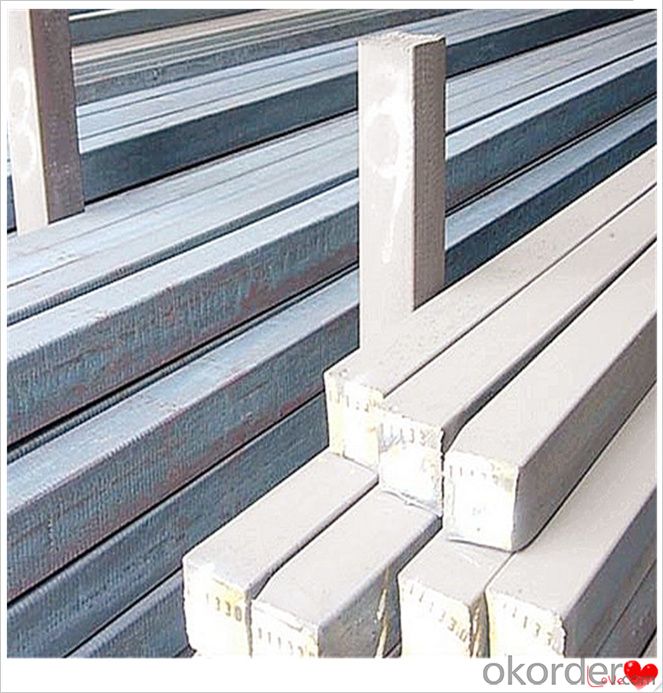
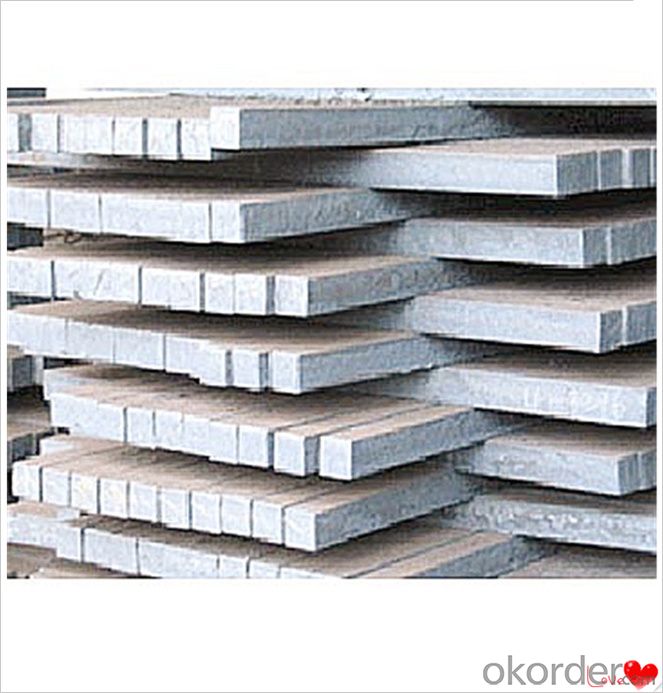
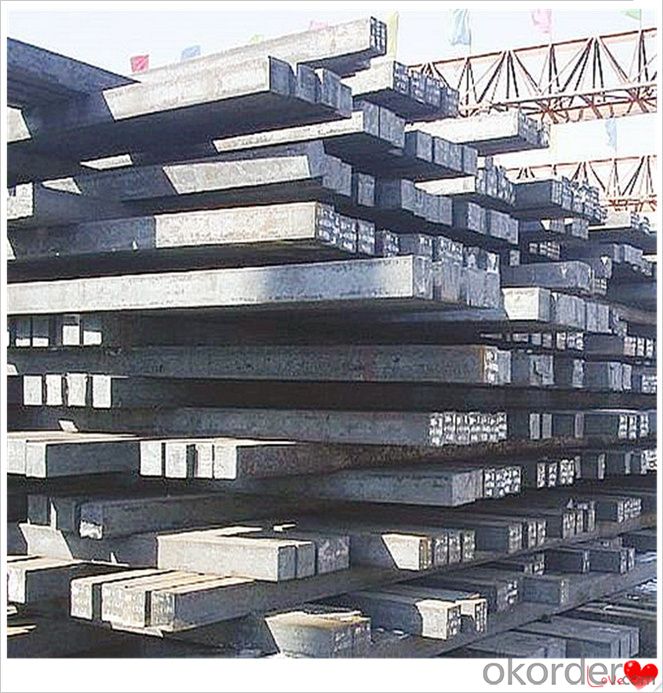
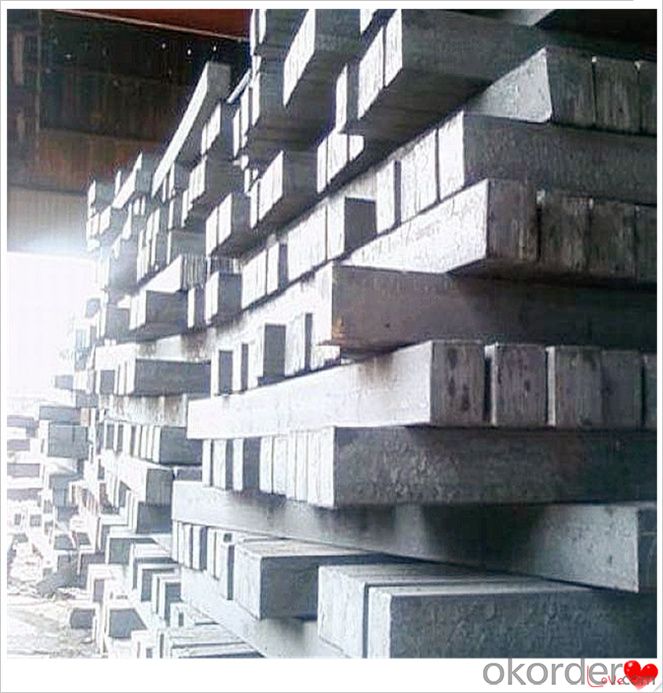
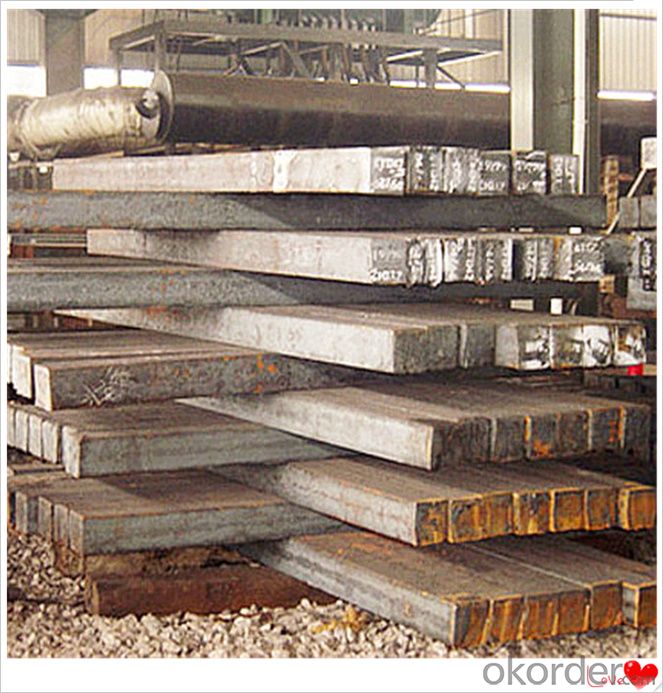
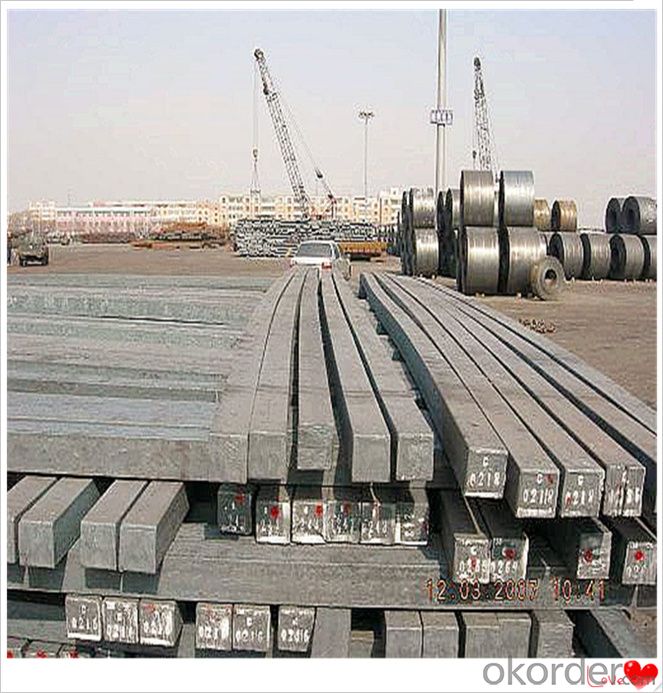
Processing
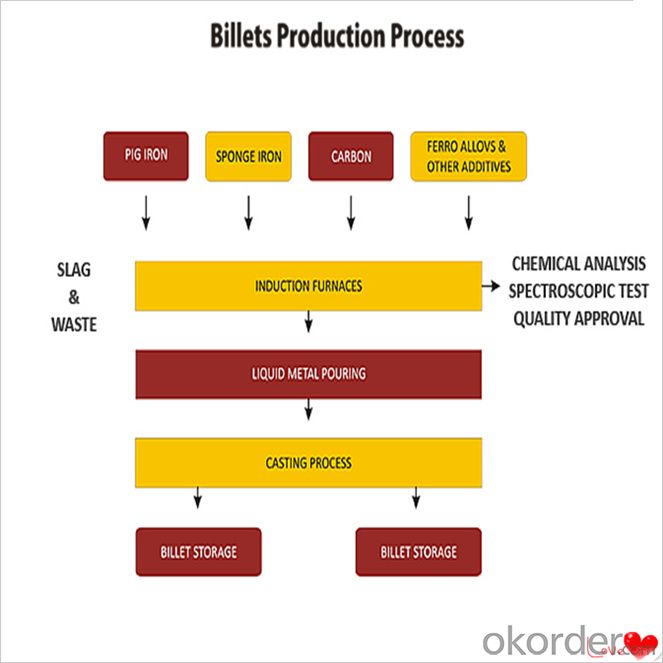
Usage-Billet Steel
Used for the plant, the bridge,shipment building high-rise building construction,lifting and transportation machinery, equipment manufracturing base building the support foundation pile manufacturing.
Billets, or ingots (as they sometimes referred to), are not of practical use until they have been formed into more functional shapes and sizes. While they have already been put in the furnace, they still require a series of shaping and molding procedures such as hot and cold working, milling and cutting before they are sold in hardware stores, or used for different applications. The unformed billets, however, can be used in striking currency such as coins and as reserves, similar to gold bars.
FAQ-Billet Steel
We have organized several common questions for our clients,may help you sincerely:
1) How about your company?
A world class manufacturer & supplier of castings forging in carbon steel and alloy steel,is one of the large-scale professional investment casting production bases in China,consisting of both casting foundry forging and machining factory. Annually more than 8000 tons Precision casting and forging parts are exported to markets in Europe,America and Japan. OEM casting and forging service available according to customer’s requirements.
2) How to guarantee the quality of the products?
We have established the international advanced quality management system,every link from raw material to final product we have strict quality test;We resolutely put an end to unqualified products flowing into the market. At the same time, we will provide necessary follow-up service assurance.
3) How long can we receive the product after purchase?
In the purchase of product within three working days, We will arrange the factory delivery as soon as possible. The pecific time of receiving is related to the state and position of customers.Commonly 7 to 10 working days can be served.
4)Do you have your own QC department?
Yes, we have, our QC department will inspect the goods during the process of mass production and after completion of production.
hot sale!!! Cast Steel Grades/ mild steel bar/ billet steel
(1): High quality steel with reasonable price.
(2): Wide excellent experiences with after-sale service.
(3): Every process will be checked by responsible QC which insures every product's quality.
(4): Professional packing teams which keep every packing safely.
(5): Trial order can be done in one week.
(6): Samples can be provided as your requirements.
- Q: How are steel billets used in the production of automotive chassis?
- Automotive chassis production relies heavily on steel billets, which are integral for creating the necessary components. These billets are cast from molten steel into rectangular or square shapes and then processed further. Initially, the steel billets undergo hot rolling, a procedure that involves heating them to high temperatures and passing them through rollers to shape them accordingly. This elongates the billets and gives them different profiles, such as I-beams or C-channels, which are commonly used in automotive chassis construction. Once the desired shape is achieved, the hot-rolled steel goes through quenching and tempering. This process rapidly cools the steel in a controlled manner, enhancing its strength and durability. The steel is then reheated and slowly cooled to stabilize its microstructure, resulting in improved mechanical properties. Next, the processed steel billets are cut into specific lengths and welded together to create the main structural components of the automotive chassis, including the frame and subframe. These components provide the necessary strength, rigidity, and stability to support the vehicle and endure the various loads and stresses encountered during operation. Steel billets are favored in automotive chassis production due to their excellent strength-to-weight ratio, high tensile strength, and ability to withstand impact and bending forces. These characteristics ensure the safety and stability of the vehicle, as well as provide a solid foundation for other automotive components like suspension systems, engine mounts, and body panels. In summary, steel billets are essential in the production of automotive chassis as they serve as the raw material for creating various structural components. Their strength, durability, and versatility make them the preferred choice in the automotive industry, guaranteeing that vehicles are built to endure the demands of everyday use and offer a safe and reliable driving experience.
- Q: What are the different types of steel billet surface treatments?
- There are several different types of steel billet surface treatments, including pickling, shot blasting, and painting. Pickling involves removing impurities and oxides from the surface of the billet using an acid solution. Shot blasting is a process in which small metallic or abrasive particles are blasted onto the surface of the billet to remove rust, scale, and other contaminants. Painting involves applying a protective coating or layer of paint to the surface of the billet to prevent corrosion and improve its appearance.
- Q: What are the different grades of steel used for producing billets?
- The different grades of steel used for producing billets vary depending on the specific requirements and applications. Some common grades include mild steel, low carbon steel, medium carbon steel, high carbon steel, alloy steel, and stainless steel. Each grade offers different mechanical properties, such as strength, durability, and corrosion resistance, to meet the desired characteristics for the final product.
- Q: What are the different types of steel billet shearing machines?
- In the market, one can find various steel billet shearing machines that are designed to meet specific needs and requirements. Below are some commonly used types: 1. The hydraulic billet shearing machine utilizes hydraulic power to cut steel billets with precision and efficiency. It has a high cutting force and can handle larger billet sizes. 2. Mechanical billet shearing machines use mechanical force, such as a flywheel or a cam-operated mechanism, to cut the steel billets. They are compact and suitable for smaller billet sizes. 3. Pneumatic billet shearing machines employ pneumatic pressure to shear the steel billets. They are commonly used when hydraulic or mechanical power is unavailable or unsuitable. 4. CNC billet shearing machines, controlled by computer numerical control, offer automated and precise cutting of steel billets. They can be programmed for complex cuts and are suitable for high-volume production environments. 5. Rotary billet shearing machines use a rotary blade to cut the steel billets. They provide continuous cutting motion and are ideal for larger billet sizes or long-length materials. 6. Cold billet shearing machines are specifically designed for cutting cold billets. They combine hydraulic or mechanical force and can handle more brittle materials when cold. 7. Hot billet shearing machines are designed to cut steel billets at high temperatures. They have specialized blades and cooling systems to manage the heat generated during the cutting process. These examples represent only a fraction of the steel billet shearing machines available in the market. The choice of machine depends on factors such as billet size, thickness, required precision, production volume, and specific application requirements. It is essential to consider these factors and seek guidance from professionals to determine the most suitable machine for individual needs.
- Q: How do steel billets contribute to the overall sustainability of a structure?
- Steel billets play a crucial role in enhancing the overall sustainability of a structure in several ways. Firstly, steel is a highly durable material that has a long lifespan, meaning structures built with steel billets will have a longer service life and require fewer replacements or repairs. This reduces the consumption of resources and materials needed for construction, thereby minimizing waste and conserving energy. Additionally, steel is 100% recyclable, which means that at the end of a structure's lifespan, the steel billets can be easily recovered and reused for other purposes. Recycling steel requires significantly less energy compared to producing it from raw materials, resulting in reduced greenhouse gas emissions and lower carbon footprints. This circular economy approach helps to conserve resources and reduce the demand for new steel production, which has a significant environmental impact. Furthermore, steel billets contribute to the overall sustainability of a structure through their strength and versatility. Steel has a high strength-to-weight ratio, meaning it can support heavy loads with less material, resulting in more efficient designs and reduced material consumption. This not only conserves resources but also reduces the carbon emissions associated with the transportation and delivery of steel. Moreover, steel is a non-combustible material, making structures built with steel billets less susceptible to fires. This enhances the safety and resilience of the structure, reducing the risk of damage or collapse during unforeseen events. The use of steel in structures can also contribute to energy efficiency by providing a thermal mass that retains and releases heat, reducing the need for excessive heating or cooling. In summary, steel billets contribute to the overall sustainability of a structure through their durability, recyclability, strength, and non-combustible properties. By using steel in construction, we can minimize waste, conserve resources, reduce carbon emissions, enhance safety, and improve energy efficiency, making structures more environmentally friendly and sustainable in the long run.
- Q: What is the typical surface finish of a steel billet?
- The typical surface finish of a steel billet can vary depending on the specific application and processing method. However, in general, steel billets are commonly produced with a surface finish that is relatively rough and may exhibit some imperfections such as scale, oxide layers, or minor surface irregularities. This is primarily due to the manufacturing process, which involves hot rolling or casting of the steel billet. Hot rolling is a common method used to produce steel billets. During this process, the steel is heated to high temperatures and passed through a series of rollers to shape it into the desired dimensions. This high-temperature process can result in the formation of scale or oxide layers on the surface of the billet. These layers can give the steel a rough and textured appearance. Similarly, steel billets produced through casting methods, such as continuous casting or ingot casting, may also exhibit a rough surface finish. In these processes, the molten steel is solidified in molds or ingot molds, which can result in the formation of surface imperfections such as surface cracks, pits, or uneven surfaces. However, it is important to note that the surface finish of steel billets can be improved through additional processes such as descaling, shot blasting, or grinding. These processes can help remove the scale, oxide layers, or other surface imperfections, resulting in a smoother and more uniform surface finish. Additionally, some steel billets intended for specific applications, such as precision machining or forging, may undergo additional surface treatments to achieve a desired finish, such as polishing or coating. Overall, the typical surface finish of a steel billet is relatively rough and may exhibit scale, oxide layers, or minor surface irregularities. However, various additional processes can be applied to improve the surface finish according to specific requirements and applications.
- Q: What are the environmental impacts of manufacturing steel billets?
- The manufacturing of steel billets has significant environmental impacts due to the extraction and processing of raw materials, energy consumption, and waste generation. 1. Raw material extraction: The primary raw materials used in steel billet production are iron ore, coal, and limestone. Extracting these resources often involves mining, which can lead to deforestation, habitat destruction, soil erosion, and water pollution. Additionally, the extraction of iron ore requires large amounts of water, which can strain local water supplies. 2. Energy consumption: Steel billet production requires high temperatures, typically achieved through the combustion of fossil fuels such as coal and natural gas. This process is energy-intensive and contributes to greenhouse gas emissions, including carbon dioxide (CO2) and nitrogen oxides (NOx), which are major contributors to climate change and air pollution. 3. Air pollution: The combustion of fossil fuels in steel production also releases particulate matter (PM), sulfur dioxide (SO2), and other pollutants into the air. These emissions can have detrimental effects on human health, causing respiratory problems and contributing to the formation of smog. 4. Water pollution: Steel manufacturing generates wastewater containing various chemicals and heavy metals. If not properly managed, these pollutants can contaminate water bodies, harming aquatic ecosystems and posing risks to human health. Additionally, the cooling of steel production equipment often requires large amounts of water, leading to water scarcity in some areas. 5. Waste generation: Steel production generates significant amounts of waste, including slag, dust, and sludge. These by-products can contain toxic substances and require careful handling and disposal to prevent soil and water contamination. To mitigate these environmental impacts, various measures can be implemented. These include adopting cleaner production technologies, improving energy efficiency, promoting recycling and reuse of materials, implementing effective waste management practices, and investing in renewable energy sources. Additionally, companies can work towards reducing their overall carbon footprint by implementing carbon capture and storage technologies or transitioning to low-carbon energy sources such as electric arc furnaces powered by renewable energy. Furthermore, government regulations and international agreements can play a crucial role in enforcing environmental standards and promoting sustainable practices in the steel manufacturing industry.
- Q: How are steel billets used in the manufacturing of mining equipment?
- Steel billets are indispensable in the production of mining equipment. They are essentially semi-finished steel products that are molded into specific shapes and sizes required for the equipment being manufactured. In the case of mining equipment, steel billets serve as the raw material for various parts like gears, shafts, and structural components. The billets are heated and then subjected to a process called forging. During this process, heavy machinery and high pressure shape and mold the billets into the desired form. The strength and durability of steel make it an ideal material for mining equipment due to the harsh conditions in which these machines operate. Steel billets possess excellent mechanical properties, including high tensile strength and resistance to wear and corrosion. These properties are critical for the equipment to endure heavy loads and abrasive environments encountered in mining operations. Once the steel billets are forged into the required shape, they undergo additional processes such as machining, heat treatment, and surface finishing. These processes ensure that the mining equipment meets the necessary performance criteria and can withstand the rigorous demands of mining operations. Overall, steel billets play a vital role in the manufacturing of mining equipment as they provide a strong and reliable foundation for various components. Their use guarantees that the equipment can endure the extreme conditions of mining operations, ultimately contributing to the efficiency, safety, and productivity of these essential industries.
- Q: What are the different types of steel billets available?
- There are several different types of steel billets available, each with its own unique properties and uses. Some of the most common types include: 1. Carbon Steel Billets: These are made primarily of iron and carbon, with trace amounts of other elements. They are known for their high strength and durability, making them suitable for a wide range of applications such as construction, automotive, and machinery manufacturing. 2. Alloy Steel Billets: As the name suggests, these billets are made by adding various alloying elements such as chromium, nickel, or manganese to the carbon steel. This enhances the mechanical properties of the steel, making it more resistant to corrosion, wear, and heat. Alloy steel billets are commonly used in the production of tools, gears, and high-strength components. 3. Stainless Steel Billets: These billets contain a minimum of 10.5% chromium, which gives them excellent corrosion resistance. Stainless steel billets are widely used in industries such as food processing, chemical, and medical, where hygiene and resistance to rust are crucial. 4. Tool Steel Billets: Designed for applications requiring high hardness, wear resistance, and toughness, tool steel billets are often used in the production of cutting tools, dies, and molds. They are made by adding elements such as tungsten, vanadium, or molybdenum to carbon steel, resulting in a material capable of withstanding extreme conditions. 5. Low Alloy Steel Billets: These billets contain small amounts of alloying elements, typically less than 5%, such as manganese, silicon, or copper. They offer improved strength, toughness, and weldability compared to carbon steel, making them suitable for structural applications in construction and engineering. 6. Microalloyed Steel Billets: Also known as HSLA (High-Strength Low-Alloy) steel, microalloyed steel billets contain small amounts of niobium, vanadium, or titanium. This results in a fine-grained microstructure and enhanced strength, allowing the production of lighter and more efficient structures in industries such as automotive and aerospace. These are just a few examples of the different types of steel billets available. Each type has its own specific properties and applications, and choosing the right type depends on the intended use and desired characteristics of the final product.
- Q: What are the different methods of steel billet surface plating?
- There are several different methods of steel billet surface plating, each with its own advantages and applications. Some of the most common methods include: 1. Electroplating: This is a widely used method where an electric current is used to deposit a layer of metal onto the surface of the steel billet. The billet is submerged in a solution containing metal ions, and when the current is applied, the metal ions are attracted to the steel surface, forming a thin coating. 2. Hot-dip galvanizing: In this method, the steel billet is dipped into a bath of molten zinc. The high temperature causes the zinc to bond with the steel, forming a protective layer. This process is commonly used for steel structures that will be exposed to harsh environments or corrosive elements. 3. Powder coating: This technique involves applying a dry powder to the surface of the steel billet, which is then heated to form a protective layer. Powder coating offers excellent durability, resistance to corrosion, and a wide range of color options. 4. Physical vapor deposition (PVD): PVD is a method where a thin film of metal is deposited onto the surface of the steel billet through a physical process such as evaporation or sputtering. This technique is commonly used for decorative purposes and to enhance the hardness and wear resistance of the steel surface. 5. Chemical conversion coating: This process involves treating the steel billet with a chemical solution that forms a protective layer on the surface. Common conversion coatings include phosphate and chromate coatings, which provide corrosion resistance and improve paint adhesion. 6. Thermal spraying: In this method, a heated material, typically a metal or ceramic powder, is sprayed onto the steel billet surface using a high-velocity gas or flame. The sprayed material forms a coating, providing enhanced protection against wear, corrosion, and high temperatures. Each of these methods has its own benefits and is suitable for different applications. The choice of plating method depends on factors such as the desired level of protection, cost, aesthetics, and specific requirements of the steel billet's end use.
Send your message to us
Damascus Steel Billet Q235,Q255,Q275,Q345,3SP,5SP,20MnSi Made in China
- Loading Port:
- China main port
- Payment Terms:
- TT OR LC
- Min Order Qty:
- 20 m.t.
- Supply Capability:
- 200000 m.t./month
OKorder Service Pledge
OKorder Financial Service
Similar products
Hot products
Hot Searches
Related keywords
